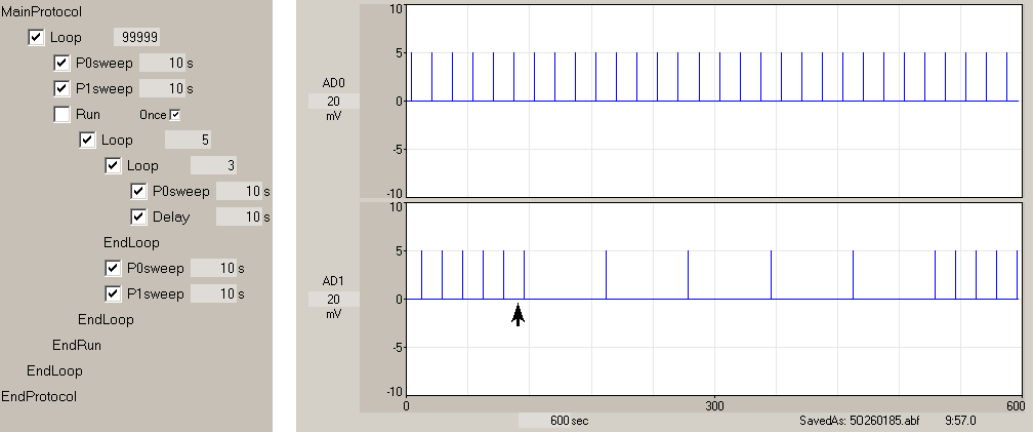User manual

157
7.4.8 Decreasing Pathway Stimulation using a Run Once Event and Loops
Alternatively by putting the ‘Continuous Inner Loop [99999]’ into a Run line and set the loop to some
reasonable non-contiguous number a set number of low frequency stimulations can be produced (Fig.
7.4.8.1). The large check box on the Run line was checked at up arrow to start the lower frequency S1
stimulation lasting 5 periods (Loop = 5) and at one-fourth the frequency (Loop = 3). Because the Run
Once check box was checked, the code in the Run construct ran only once, and the large check box on
the Run line automatically became unchecked.
Fig. 7.4.8.1. Lower stimulation frequency of one pathway (S1) versus another pathway (S0) for a set
number of times. The Run line was checked at the up arrow, and the Run code ran only once.
7.4.9 Alternative LTP Stimulation #1 using the Run Once Event
While running the normal basic LTP experiment, evoking a single T0 train sweep inserts the train when
the next P0 or P1 sweep would have come, and delays the next P0/P1 sweeps by the T0sweep period
(see Fig. 4.15.5.1). This is what happens with LTP stimulus train induction without writing any scripts.
However, some researchers may not want S0 or S1 shifted (as in Fig. 4.15.5.1). One approach is to write
a protocol shown in Fig. 7.4.9.1. In this example there is normal alternating P0/P1 sweeps (containing
one S0 or S1 pulse, respectively) in an AvgLoop to average every four sweeps – which is the normal
basic alternating/averaging LTP experiment.
But when the large check box on the Run line is checked (at Up arrow), then a T0sweep followed by a
T1sweep is then run. Because T0 sweep has 100 S0 pulses and T1sweep has 1 S1 pulse, 100 S0
pulses appear where a single S0 pulse would normally appear, and the S1 pulse frequency is not
disrupted. Also, importantly, the T0sweep S0 train and the T1sweep single S1 pulse would not be put into
the P0/S0 and P1/S1 pulse averaging.










